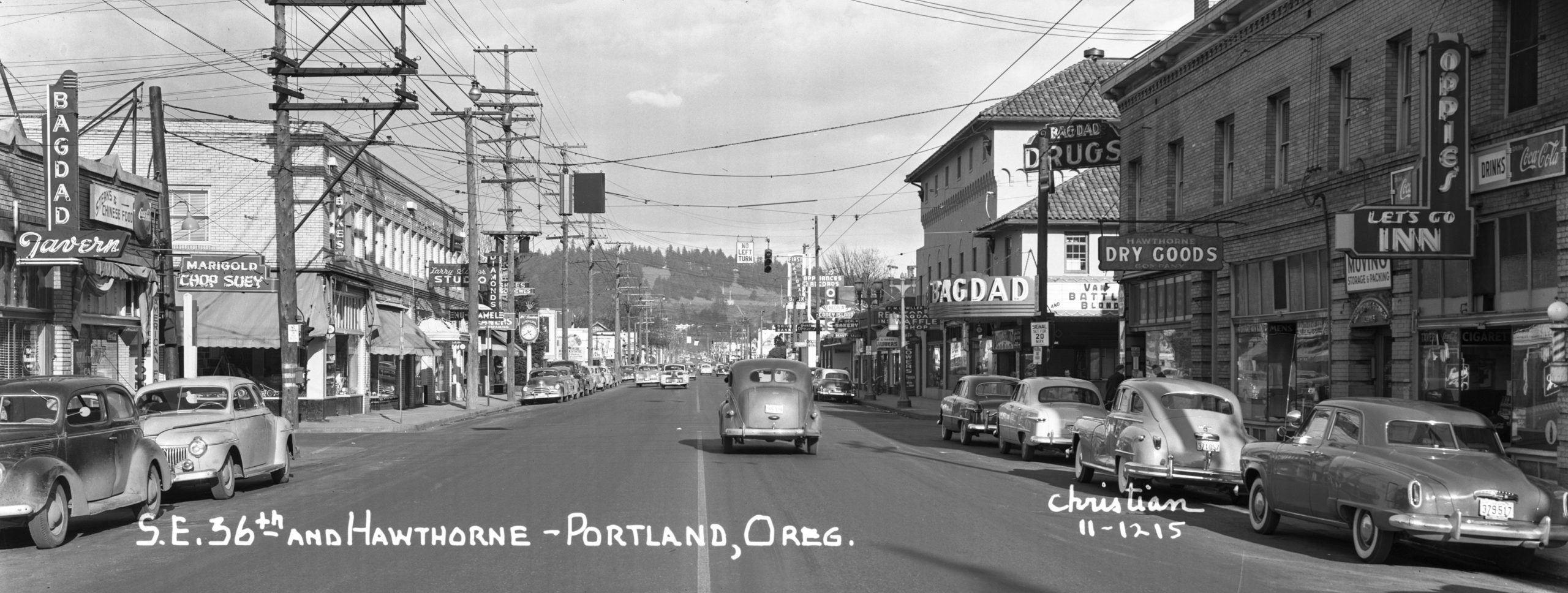
Guidebooks for tourists to Portland describe boutiques and restaurants on Hawthorne Boulevard. Local folks know about the boulevard’s hippie history and the neighborhood’s leftist leanings. It has been described as the place where political correctness meets conspicuous consumption.
Portland’s Hawthorne Boulevard is the book that asks the question: How did it turn out this way? Starting with the tribal people who came first, we meet the white resettlers, the Chinese laborers who cleared the land, and the new residents who arrived in the years following the Lewis and Clark Exposition. Business boosters created a thriving retail climate early in the 20th century and, when businesses moved to malls or suburbs in the 60’s and 70’s, a new and more diverse crop of entrepreneurs moved into the neighborhood.
The character of Hawthorne is shaped by the people who live in the neighborhoods that surround it. Election results for the last few decades will confirm that neighbors vote at the far left end of the political spectrum. The fliers on the telephone poles along Hawthorne have long cataloged the issue of the day and called Portlanders to support progressive causes.
There are almost 200 historic photographs in Portland’s Hawthorne Boulevard and readers may be surprised to see what it was like in its earlier decades. Close to the river, it was a swamp, and Hawthorne Avenue sat on a trestle 20 feet high. Hawthorne Park, at the corner of 12th Avenue, included a lake and extensive picnic grounds and was the site of large gatherings. Later there were more than a dozen gas stations on Hawthorne while now, there is only one left.
And then there are the stories. Walter Burrell built a fabulous mansion at 28th Avenue and then sold it when his young son died after eating strychnine in the basement. Phillip Buehner bought the historic Perry Prettyman home at 55th and conducted extensive remodeling with lumber that proved to be filled with termites. (The mansion that sits there today was a replacement.) Neighbors organized to stop the destruction of Hawthorne Park but they were not successful. Nobel Laureate Linus Pauling was living in his mother’s rooming house when he left high school without graduating. Musician Doc Severinsen’s dad Doc had a dental practice on Hawthorne in a tiny building that still stands.
Portland’s Hawthorne Boulevard provides and inside look at an infamous boulevard.
